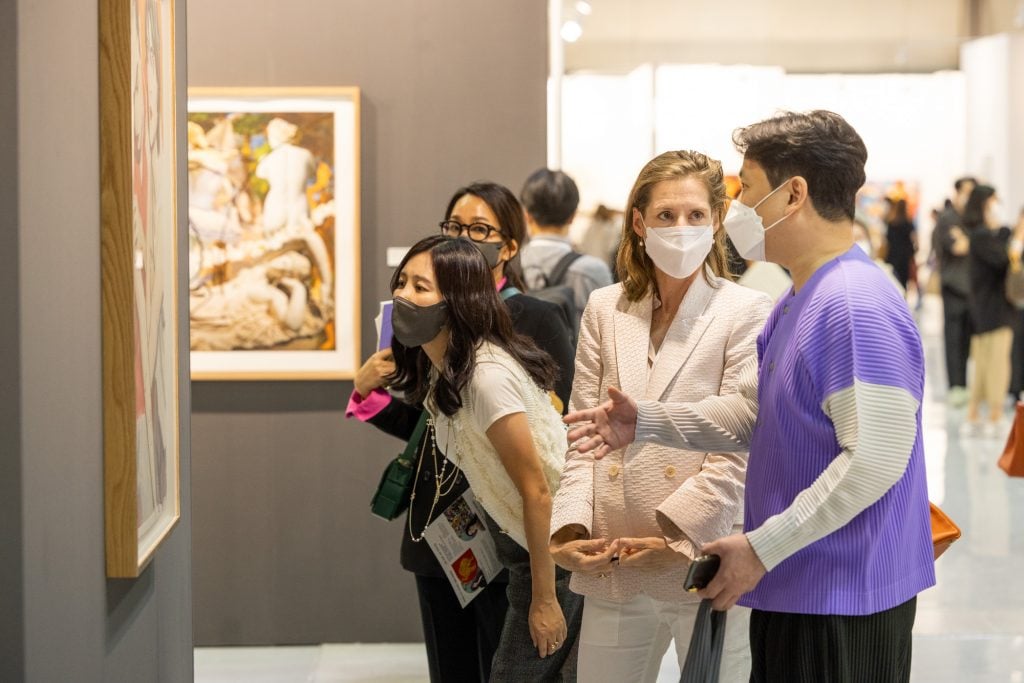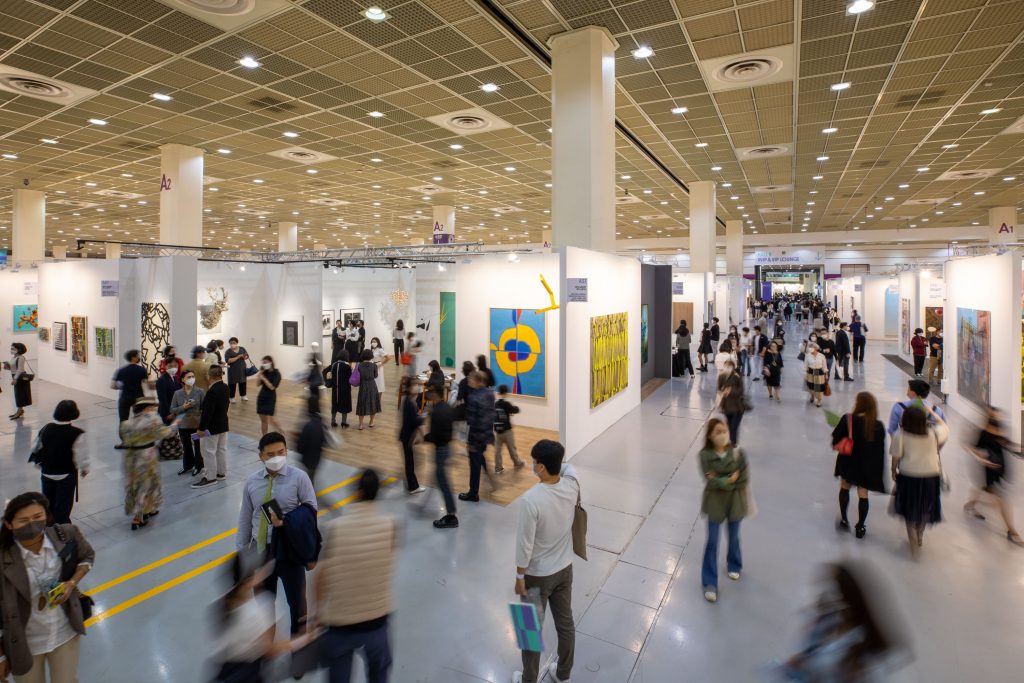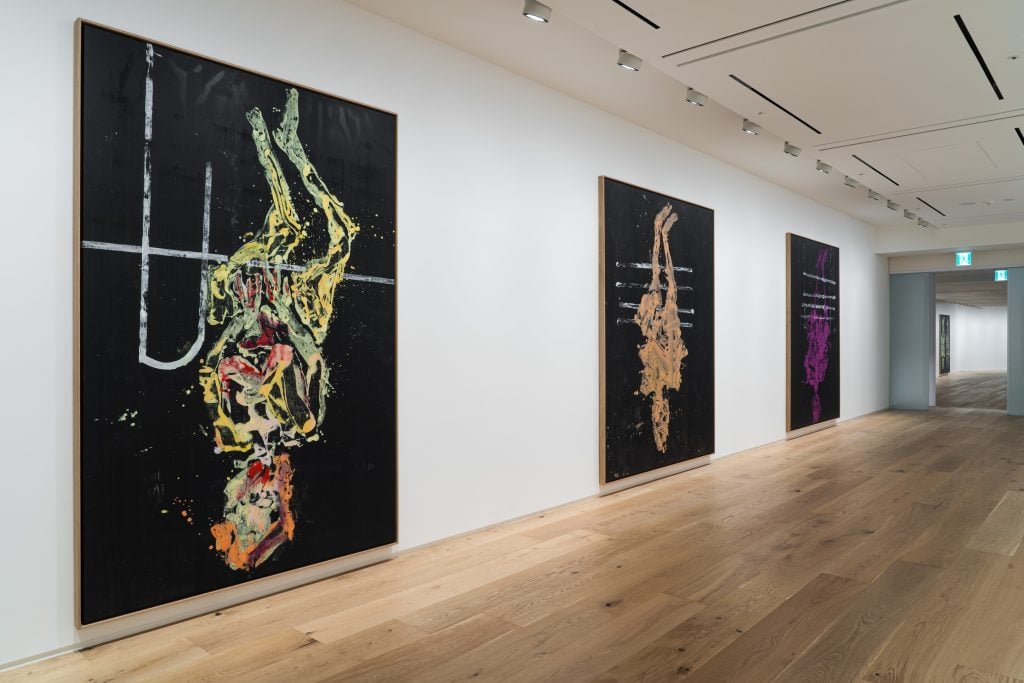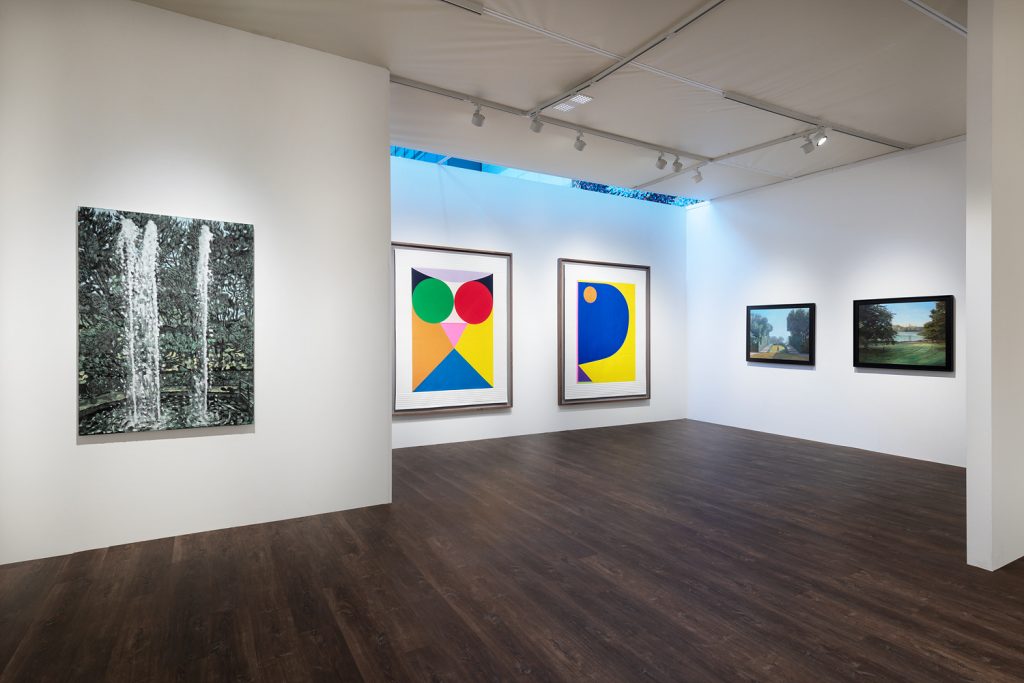Art World
‘We Are Ready!’: Record Sales and Attendance at the KIAF Art Fair Are Stoking Hopes For Seoul as Asia’s Next Art Hub
Galleries are focusing on favorable conditions in the South Korean capital as uncertainty around Hong Kong grows.

Galleries are focusing on favorable conditions in the South Korean capital as uncertainty around Hong Kong grows.

Record-breaking attendance and sales at this year’s Korea International Art Fair (KIAF) have boosted some industry players’ confidence in Seoul, setting high hopes for the South Korean capital to become the next art hub in Asia amid uncertainties looming over the future of Hong Kong.
The five-day KIAF concluded on Sunday (overlapping with London’s Frieze, which is forming a new partnership with the Korean fair next year) saw a total of 88,000 visitors—a 7 percent increase from the last physical edition in 2019—who browsed artworks presented by 170 dealers at the Coex convention center in Seoul’s Gangnam district. Most of the attendees were locally-based and many of them were young, emerging collectors, according to participating galleries. A total of ₩65 billion ($55 million) worth of artworks was sold during the fair, organizers said, with ₩35 billion ($29.7 million) traded on the first VVIP day alone.
The enthusiasm for the return of the physical edition of KIAF after a year of pandemic-induced hiatus, as well as the celebration of its 20th anniversary this year, was remarked not only on the ground but also during Frieze in London, where galleries participating in both fairs exchanged notes on how good the business was in Seoul on the first day.

Opening day of KIAF in Seoul 2021. Photo by KIAF Seoul Operating committee. Courtesy of KIAF Seoul.
The majority of exhibitors at KIAF came from Seoul or environs, but there was no lack of international galleries taking part in the fair, such as Pace Gallery, Lehmann Maupin, and Perrotin, which already have outposts in Seoul. Pace made multiple sales on the opening day, selling works by Latifa Echakhch, Adolph Gottlieb, David Hockney, Kun-yong Lee, Kohei Nawa, and Joel Shapiro. Lehmann Maupin closed on a piece by Chantal Joffe in the £20,000-to-£50,000 range; a work by Mandy El-Sayegh for between $50,000 and $60,000; and paintings by David Salle from his “Tree of Life” series, at prices from $90,000 and $400,000. Local heavyweights Gallery Hyundai said its sales were twice as much as that of the 2020 edition (which was online-only), and Kukje Gallery said it has sold works by Park Seo-Bo, Ha Chong-Hyun, Lee Kwang-Ho, Haegue Yang, Jenny Holzer, Byron Kim, and Daniel Boyd for prices ranging from $10,000 to $600,000.
A number of international galleries participated for the first time, including Peres Projects, Esther Schipper, and König from Berlin (which just opened its first Asia outpost in Seoul in April), plus Gladstone Gallery from New York and Brussels. Various Small Fires, which operates in Los Angeles and Seoul, also took part.
“This year’s KIAF, which was our first, was enthusiastically received and even more positive than what we expected,” Sunil Kim, Esther Schipper’s associate director in Asia, told Artnet News. “The vast majority of our collectors are from an emerging generation, where established collecting families have handed over their acquisition process and also encouraged and supported their children to begin their own collections. Approximately 50 percent of this new generation has studied abroad.”

Installation view of Georg Baselitz’s “Hotel garni” at Thaddaeus Ropac’s new Seoul gallery, on view through November 27, 2021. © Georg Baselitz. Photo: Ahn Heesang. Courtesy of Thaddaeus Ropac Gallery.
KIAF’s success is in line with the international art world’s growing interest in Seoul. This month sees Thaddaeus Ropac inaugurating its Seoul outpost with a solo exhibition of new works by Georg Baselitz, joining an array of Western galleries that are already operating in the South Korean capital. It has also paved the way for KIAF’s collaboration with Frieze, which will be making its debut next year as Frieze Seoul. Featuring around 100 galleries, Frieze Seoul will run alongside KIAF in September 2022 to avoid clashing with the London fair in October.
Meanwhile, eyebrows are raised over the path forward for Hong Kong amid ongoing political turmoil and the imposition of the national security law, which many fear will curtail the city’s freedoms.
Although as a tax-free trading hub, the Hong Kong market continues to be strong, some gallerists exhibiting at Frieze London expressed concern over the city’s future. More than 100 pro-democracy activists and former lawmakers have been locked up since the new law—which bans activities related to secession, subversion, terrorism, and collusion with foreign forces to endanger national security—was introduced in June 2020. Tens of thousands have fled the city. The New York Times moved part of its Hong Kong office to Seoul last year, while others were reportedly considering the same.
Hong Kong’s stringent Covid-19 travel restrictions, which require international travelers, even if fully vaccinated, to quarantine for 14 to 21 days upon arrival, have also made business difficult, some gallerists and art industry told Artnet News. South Korea and Singapore, however, are shifting to a “living with Covid” approach and easing rules for fully vaccinated travelers.

Installation view of Gallery Hyundai’s booth at KIAF Seoul. Courtesy of Gallery Hyundai.
Some see this as an opportunity for Seoul.“We are ready!” Jaeseok Kim, creative director of Gallery Hyundai, told Artnet News, adding that international galleries that have shops in the country are being integrated into the local scene and helping to elevate it to the next level. “Seoul’s art scene has a very unique structure and energy. It has a uniqueness and changeability that is very different from the stereotypical system and atmosphere of the Western art scene.”
Bo Young Song, vice president of Kukje Gallery, told Artnet News that she believes that Seoul has “all the qualifications necessary” to receive the mantle from Hong Kong as Asia’s new art center: “In fact, Seoul may even be better suited for this than Hong Kong,” she said. “Our infrastructure, which includes galleries, museums, and biennales, along with the expanding pool of Korean clients, is developing at an impressive rate.”
Hong Kong had also met many of these preconditions, she continued, but “despite the abundance of amazing local artists, not many found success on the global stage. Korea, on the other hand, is home to internationally renowned modern masters…along with critically acclaimed subsequent generations of contemporary artists.”
Song added, “An art hub can only be a ‘hub’ when its local artists are internationally recognized. I cannot think of a city or region better suited to become the next art hub.”